Picture this: you’re a proud owner of a vacuum press, ready to take on the world of thermoforming and woodworking. Your next mission? Finding the elusive silicone vacuum sheet—a stretchy, heat-resistant superhero that can withstand up to 250°C without breaking a sweat.
But wait… where do you even start?
The answer is simple: China.
China isn’t just the land of pandas and dumplings; it’s the global powerhouse for manufacturing rubber and plastic products, including the magical vacuum forming silicone sheets. For seasoned buyers, finding the best membrane sheet in China is like picking fruit in an orchard—easy and satisfying.
But for newcomers? It can feel like searching for a needle in a haystack while blindfolded. The experience often resembles running an unplanned marathon: time-consuming, exhausting, and sometimes downright unpleasant.
Here’s the good news: it doesn’t have to be that way. Buying silicone vacuum sheets can be a cost-effective, rewarding experience—if you know what you’re doing. And that’s where we come in.
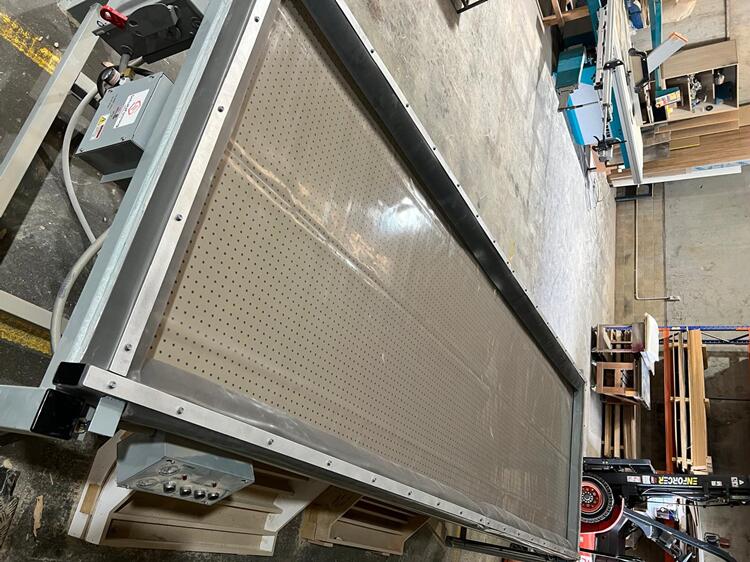
In this guide, we’ll show you how to navigate the exciting (and occasionally bumpy) journey of sourcing silicone vacuum membranes from China. From finding trustworthy suppliers to avoiding rookie mistakes, we’ve got you covered.
So grab your metaphorical compass—we’re about to set sail on this sourcing adventure!
Where To Buy Silicone Vacuum Sheets?
Whether you’re crafting custom wood doors or producing 3D laminated products in a vacuum membrane press, the right supplier can make or break your project. Suppliers control your product’s cost, quality, packaging, and shipping—so choosing wisely is essential.
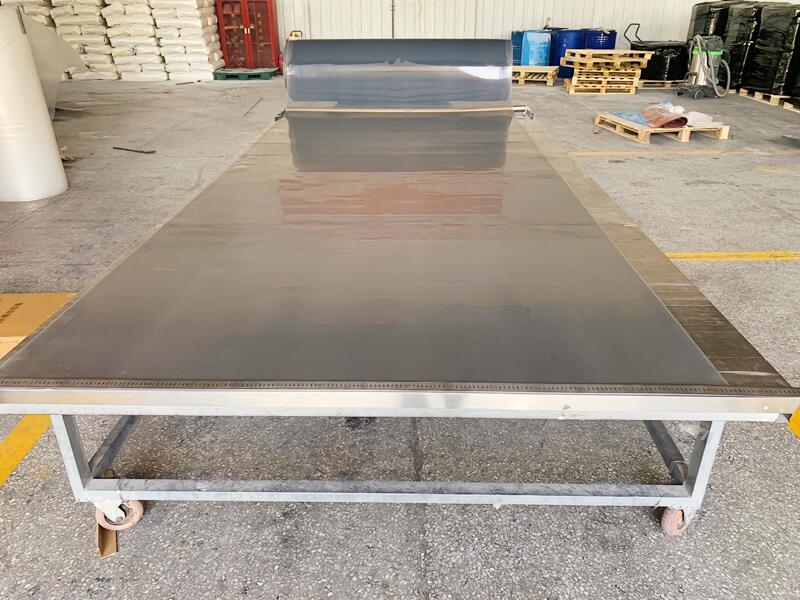
1. Leverage Current Vendors
If you already have reliable suppliers, why not start there? Placing orders with existing partners is often the fastest and most efficient option. Mutual trust, streamlined communication, and a history of collaboration mean fewer hiccups along the way.
Pro Tip: Avoid putting all your eggs in one basket. It’s best not to give more than 55% of your total orders to a single supplier. Diversifying your supplier base minimizes risks.
2. Seek Recommendations
Ask your network—friends, colleagues, or industry peers—for recommendations. Honest feedback from someone you trust can be invaluable. But tread carefully! Competitors might steer you in the wrong direction, and recommendations without firsthand experience come with their own risks.
3. Explore Trade Shows and Exhibitions
Nothing beats face-to-face interaction. Trade shows are a fantastic way to meet suppliers, evaluate products, and discuss business details on the spot. Networking with other attendees can also uncover hidden gems.
Warning: Be cautious of suppliers who offer rock-bottom prices upfront, only to hike them later. A discerning eye can help you spot exaggerations or hidden costs.
4. Utilize Online Searches
The internet is your playground! Search engines, B2B marketplaces, and social media (like Linkedin, Facebook, Youtube) make it easier than ever to connect with suppliers. However, don’t limit yourself to the first page of Google—some of the best suppliers might not be SEO-savvy.
Pro Tip: Use a variety of long-tail keywords, like “silicone vacuum sheets for thermoforming” or “vacuum pressing silicone sheets.” Expanding your search terms can yield better results.
5. Combine Methods
Each method has its strengths, so why not combine them? For example, start with an online search, validate suppliers through recommendations, and finalize deals after meeting them at a trade show. Mixing approaches can provide a well-rounded view of your options.
Final Thought: The supplier search journey can be filled with uncertainties—who they are, how they operate, and the quality of their products. But with the right strategies and a healthy dose of caution, you’ll find the perfect partner for your needs.
What to Look for When Choosing a Vendor
Selecting the right vendor isn’t about finding perfection—it’s about identifying a partner who aligns closely with your business needs. Here are the essential factors to evaluate:
1. Effective Dialogue
A vendor who communicates effectively can articulate their product’s strengths and ensure alignment with your project requirements.
Good communication minimizes misunderstandings and speeds up project progress. For experienced buyers, the conversation goes beyond just pricing, encompassing delivery expectations, customization options, and long-term collaboration potential.
2. Product Standards
Low costs mean little if the product doesn’t meet your quality expectations. Prioritize suppliers who can deliver consistent quality, whether through:
- Providing FREE samples or customer testimonials.
- Allowing visits to their facilities for an up-close look at their quality assurance processes.
- Offering trial orders to assess product quality and supplier reliability.
3. Cost Considerations
While price remains a deciding factor, it shouldn’t be the sole focus. Gather at least three quotes from different suppliers to assess market rates and identify the best balance between cost and quality. Remember, the cheapest option might lead to hidden costs if product quality or service falls short.
Sometimes, don’t be swayed by appearances. Spacious factories and luxurious offices might seem impressive, but often, it’s the customers footing the bill.
4. Lead Time Efficiency
Timely delivery is critical for smooth operations. Whether it’s avoiding stockouts or meeting project deadlines, a supplier with predictable and reasonable lead times is invaluable. Ensure your supplier can deliver without keeping your customers waiting for months.
5. Flexible Payment Options
A supplier’s payment terms can significantly impact cash flow. Consider asking:
- Do they offer credit terms, and if so, what are the limits? (We accept Visa, JCB, Discover, Diners, and American Express, but not Mastercard.)
- Are discounts available for early payments?
- Would they extend credit for future orders after successful initial transactions?
A flexible payment arrangement can pave the way for a more collaborative relationship.
6. Transparency and Trustworthiness
A trustworthy vendor is open and transparent about their processes, capabilities, and limitations. They should provide clear and honest answers to your questions, such as:
- Certifications and Compliance: Does the vendor have relevant certifications, such as ISO standards, to ensure quality and ethical production practices?
- References and Case Studies: Are they willing to share case studies or references from previous clients to showcase their track record?
- Clear Policies: Do they clearly outline policies on returns, refunds, or handling defective products?
Transparency fosters trust, which is the foundation of a strong and reliable business relationship. A vendor who willingly shares their practices and challenges is more likely to become a long-term partner you can rely on.
7. Additional Factors
Beyond these core considerations, assess factors like:
- Minimum Order Quantity (MOQ) requirements
- Packaging quality and details
- Responsiveness of customer service
- Financial stability of the supplier
Weighing these additional elements helps ensure the supplier fits your unique needs while reducing risks.
Final Note: Finding the right vendor may seem challenging, but with a structured approach and these considerations in mind, you’ll be well-prepared to make a confident decision.
Step-by-Step Workflow for Sourcing Silicone Sheets
Sourcing from China can feel like navigating a maze—it’s full of opportunities but also potential pitfalls. Whether you’re sourcing silicone vacuum sheets or other products, understanding the workflow is your compass.
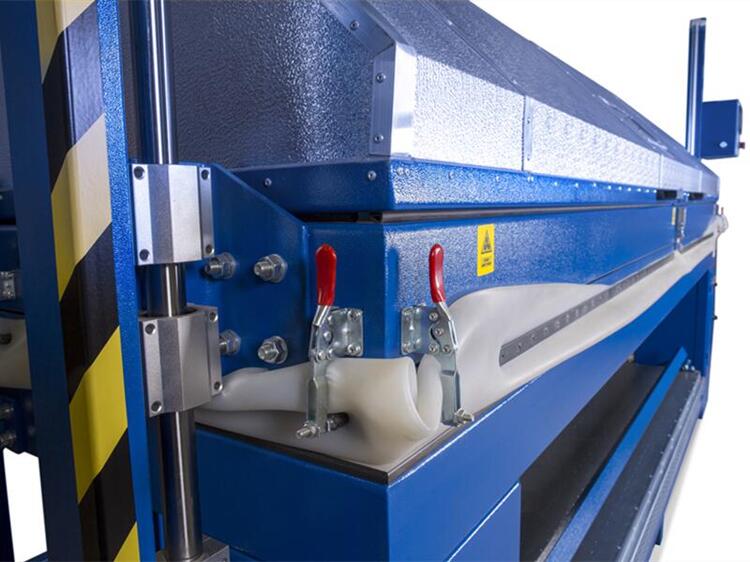
This guide breaks down the essential steps with a pinch of humor to keep things light while you tackle the process like a pro!
1. Starting the Conversation with Suppliers
Initiate contact through email, which remains the most efficient method. If the response is delayed, follow up with a phone call to ensure your inquiry gets noticed.
A professional supplier typically replies within 24 hours, demonstrating their commitment to customer service.
2. Reaching Agreements Through Negotiation
Negotiation aims for a win-win outcome. Communicate with suppliers through:
- Phone calls
Look for suppliers who are responsive and proactive. Lackluster communication may signal issues with reliability. Negotiation doesn’t always mean securing the lowest price; instead, focus on obtaining the best value.
Evaluate costs such as labor, materials, and mark-ups, and don’t forget to establish payment terms. Common Incoterms include EXW, FOB, CIF, DDP, among others.
3. Evaluating Quality with Sample Testing
Request samples to assess both product quality and supplier reliability. Use this phase to evaluate their responsiveness and willingness to assist. This is your opportunity to ensure the supplier meets your expectations before committing to larger orders.
- Was communication smooth?
- Did they meet your assistance needs?
- Can they provide a solution?
4. Finalizing Your Purchase Order
Once satisfied with negotiations and sample evaluations, it’s time to place an order. To avoid any misunderstanding, clearly outline:
- Sizes
- Quantities
- Packaging details
- Leading time
- Payment methods
- Shipping terms
5. Initiating the Production with a Deposit
Suppliers generally require a deposit (commonly 30%) before starting mass production. Confirm the terms and timelines before transferring funds to ensure clarity on both sides.
6. Ensuring Quality with Product Inspections
Conduct thorough inspections to verify the quality of your order. If an on-site visit isn’t possible, you can request detailed photos or videos from the supplier or arrange for a third-party inspection agency to assess the goods on your behalf.
Proper packaging is essential to prevent damage during transit, and reputable suppliers should have clear compensation policies for defective products.
7. Completing Payment Before Shipment
After inspecting the goods, complete the remaining payment (usually 70%). In some cases, negotiate a split payment, such as 50% before shipment and 20% upon delivery, depending on the agreement.
8. Choosing the Best Shipping Method
Select a shipping option that suits your timeline and budget:
- By Air: Fastest but costly, ideal for urgent or delicate goods.
- By Sea: Most economical for large or bulky shipments with flexible delivery timelines.
- By Train/Truck: Available for China-Europe or China-Southeast Asia routes, offering a balance between cost and time.
9. Clearing Customs Efficiently
Handle customs clearance yourself or with the help of a broker. Ensure you’re prepared to pay duties and provide all required documentation. The duration depends on local customs efficiency, so plan accordingly.
10. Receiving and Verifying Your Shipment
Upon receipt, inspect the goods for any damages or discrepancies. Report issues promptly to your supplier, who should provide after-sales support to address any problems. This final step ensures your shipment meets expectations and wraps up the sourcing process successfully.
And there you have it! Sourcing from China doesn’t have to feel like scaling the Great Wall. With clear communication, reliable suppliers, and a well-structured plan, you’re on your way to success.
Remember, every great business journey starts with the first inquiry—and maybe a little patience at customs! Happy buying!
Essential Insights: What to Know Before Importing
Understanding Incoterms: A Guide to Trade Terms
What are Incoterms?
Incoterms are internationally recognized rules that define the responsibilities of sellers and buyers in export transactions. They outline key aspects such as delivery points, transportation costs, export/import duties, and insurance costs, helping both parties clearly understand their obligations and risks.
Incoterms for Any Mode of Transport (2020)
- EXW – Ex Works (e.g., place of delivery)
- FCA – Free Carrier (e.g., named place of delivery)
- CPT – Carriage Paid To (e.g., place of destination)
- CIP – Carriage and Insurance Paid To (e.g., place of destination)
- DAP – Delivered At Place (e.g., named place of destination)
- DPU – Delivered At Place Unloaded (replacing old DAT, with added unloading responsibility)
- DDP – Delivered Duty Paid (e.g., named place of destination)
Incoterms for Sea and Inland Waterway Transport (2020)
- FAS – Free Alongside Ship (e.g., port of loading)
- FOB – Free On Board (e.g., named port of loading)
- CFR – Cost and Freight (e.g., named port of destination)
- CIF – Cost, Insurance, and Freight (e.g., named port of destination)
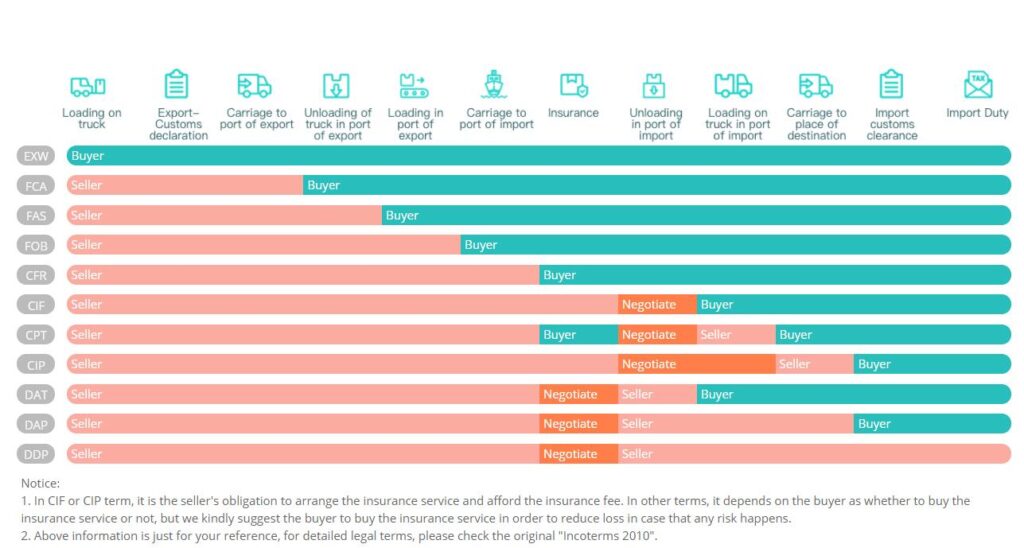
Why Are Incoterms Important?
Incoterms provide a standardized framework, ensuring transparency and minimizing misunderstandings in international trade. Both exporters and importers benefit from knowing their responsibilities at each stage of the transaction.
Who Are the Key Buyers of Silicone Vacuum Sheets?
Although silicone vacuum sheets are not a mainstream product, they serve specialized industries. The main buyers fall into three categories:
1: Industrial End Users
These are factories and workshops that utilize silicone vacuum sheets for applications such as laminating PVC foil, thermoforming solid surface materials, or producing furniture panels and wood veneer doors. Examples of such users include manufacturers of high-quality furniture, kitchen cabinets, and decorative surfaces.
Here’s a clear and structured breakdown of the uses of our silicone vacuum sheets:
(1) Vacuum Forming
- Used to create molds for 3D objects, such as wood, metal, and plastic components.
(2) Thermoforming
- Used to shape solid surface sheets and thermoplastic materials in industries like furniture and automotive.
(3) Veneer Lamination
- Applied in laminating veneers onto doors, furniture panels, and decorative surfaces.
(4) Solar Panel Lamination
- Used in the production process to laminate photovoltaic panels, ensuring durability and efficiency.
(5) Composite Materials Vacuum Lamination
- Essential for laminating composite materials used in aerospace, automotive, and high-performance industries.
Let me know if you need any refinements or additions!
2: Vacuum Press Equipment Providers
Producers of vacuum presses often include one or two silicone sheets with their machinery to support their customers’ operations. This ensures that buyers can immediately begin production upon receiving their equipment, streamlining the setup process and enhancing customer satisfaction.
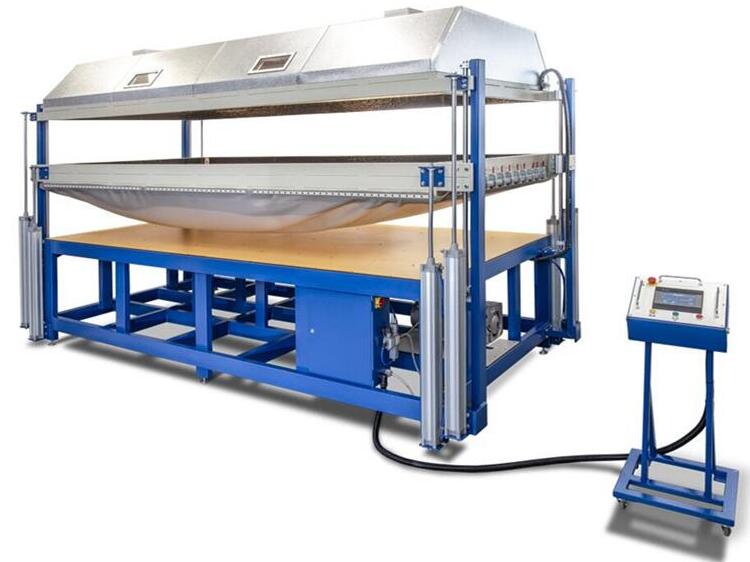
3: Regional Distributors and Resellers
These businesses procure silicone vacuum sheets, along with a variety of other rubber and plastic products, from China. They serve as intermediaries, supplying these products to local industries and end-users, catering to the specific needs of their markets with tailored inventory options.
By identifying and understanding these buyer categories, businesses can better target their sourcing and marketing strategies to meet the distinct demands of each segment.
Final Thoughts: Making Your Buying Journey a Success
Well done! You’ve just conquered the labyrinth of sourcing silicone vacuum sheets from China!
Sure, it might’ve felt like dodging hurdles in a game of supplier roulette, but with the right partner (psst: China Deer Hunter) and a solid plan, you’ll soon be handling top-notch silicone membranes like a seasoned pro.
Why juggle the complexities on your own when we’re here to make things easier? Give us a ring at (+86)13823789007 or drop an email at export@cndeerhunter.com—our team of silicone superheroes is on standby, ready to guide you every step of the way.
Let’s transform your importing adventure into a story worth sharing (and maybe bragging about). Ready to roll? The silicone sheets of your dreams are just a call or click away!



